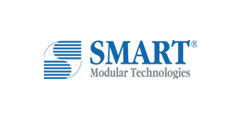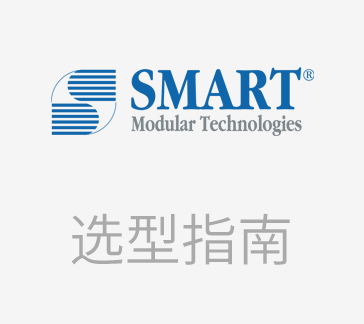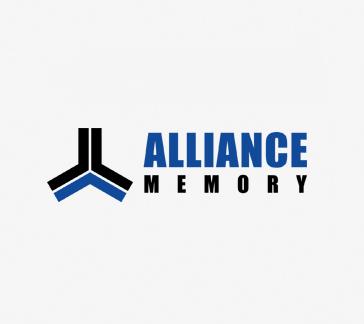E-Waste: Navigating Challenges and Opportunities in Communications Applications




The telecommunications industry is at a crossroads where design optimization, cost management, and environmental sustainability converge. With the increasing demand for reliable and high-performance telecommunications equipment, manufacturers face the challenge of designing systems that not only meet technical requirements but also align with budget constraints and growing environmental concerns. Memory components, like DRAM and Flash, are central to the performance and lifespan of telecommunications applications. Especially in long-life applications, cost-effective design strategies, including the use of durable memory components, can help mitigate electronic waste concerns while ensuring that telecommunications applications remain competitive and sustainable.
Design: Managing Total Cost of Ownership (TCO) Through Memory Longevity
Telecommunications equipment, from transceivers and switches to satellites and mobile communication devices, is highly dependent on memory for processing, storage, and operational stability. The choice of memory—whether DRAM, eMMC, Flash memory cards, or other variants—directly impacts not just the total cost of ownership (TCO) but also the lifecycle management and sustainability of these systems.
One of the key drivers in the design of telecommunications equipment is the need to minimize TCO. That is particularly true for applications where downtime translates directly into revenue loss or degraded service quality. Durable memory components reduce the frequency of unexpected failures, which can cause service interruptions and necessitate costly repairs. For example, selecting memory components proven to operate reliably under extreme conditions—such as those found in outdoor transceivers or satellite communication systems— lower maintenance costs, contributing to a lower TCO, although they may require a higher upfront cost. The longer an application is projected to last, the more important it becomes to reduce its lifecycle cost. Telecommunications systems are often deployed with the expectation of a 7- to 10-year operational life, especially in infrastructure-critical applications. By using memory components with a proven track record of long-term reliability, the need for mid-life upgrades or replacements can be reduced, thereby lowering lifecycle costs.
E-Waste: A Growing Concern for Telecommunications
The telecommunications industry is increasingly receiving backlash as a major source of electronic waste. The UN estimated its contribution was 4.6 billion kg of e-waste in 2022. Telecom is driven by the semiconductor industry’s speed of innovation and market demand for cutting-edge technology, leading to the frequent release of new products to meet market expectations. While essential for maintaining competitive advantage, this rapid cycle also contributes to the growing e-waste problem. As technological advancements necessitate the constant upgrading and replacement of telecom equipment, the volume of e-waste has surged. According to the Global E-Waste Monitor 2024, the amount of e-waste is increasing five times faster than recycling efforts can keep up.
Navigating Challenges and Finding Opportunities
While cost and performance are paramount, there is an increasing need for telecommunications equipment to be designed with sustainability in mind. The strategic use of durable memory components presents an opportunity to align economic and environmental goals. Memory components designed for durability do more than reduce maintenance costs—they also contribute to sustainability by extending the operational life of telecommunications equipment. For example, DRAM and Flash memory with extended endurance cycles and enhanced data retention capabilities can reduce the frequency of replacements. While it may not stop the end-user from wanting the latest, extending the life of telecom products is a crucial step towards more sustainability. A strategic approach to memory selection can influence the entire lifecycle, from design and deployment to end-of-life disposal.
Telecommunications equipment must be designed with a view toward the long-term operational needs of the industry. That means selecting memory components compatible with current technological requirements and also resilient enough to support future upgrades and expansions. For instance, choosing memory technologies that offer backward compatibility can enable seamless transitions during system upgrades, reducing the need for full-scale replacements and, thereby, minimizing e-waste. Effective lifecycle planning includes the use of durable and forward-compatible memory to deliver products that are designed for longevity and reuse.
Designing for Sustainability Without Compromising Performance
The telecommunications industry faces complex challenges balancing cost, performance, and sustainability. Manufacturers and designers can address these in part by focusing on the strategic selection of durable memory components. At SMARTsemi, we understand the critical role that memory components play in the telecommunications industry, not just in terms of performance but also in the broader context of cost management and sustainability, building our offering to deliver solutions that meet these critical needs. The use of high-durability memory enhances the reliability and longevity of telecommunications equipment but also plays a crucial role in reducing the industry's contribution to global electronic waste. As telecom moves forward, the integration of cost-effective design with sustainability principles will be essential in meeting both the operational demands and environmental responsibilities of modern telecommunications.
- |
- +1 赞 0
- 收藏
- 评论 0
本文由飞猫警长转载自SMARTsemi Official Website,原文标题为:E-Waste: Navigating Challenges and Opportunities in Communications Applications,本站所有转载文章系出于传递更多信息之目的,且明确注明来源,不希望被转载的媒体或个人可与我们联系,我们将立即进行删除处理。
相关研发服务和供应服务
相关推荐
2024年Q3-DRAM与SSDA市场态势剖析:AI驱动下的涨势与变数
AI的蓬勃发展持续推动半导体和IT产业的成长,尤其在存储领域,生成式AI应用助长了市场对高性能运算方面的需求。从数据中心的AI服务器到消费端的AI PC,内存运算和存储性能表现至关重要,成为提升AI应用落地的关键推手。
2024年Q1 DRAM与SSD市场趋势及展望:存储产业强劲反弹
回顾2023年,受到整年持续的通货膨胀及地缘政治紧绷情势的影响,全球经济大幅放缓。值得注意的是,存储产业预估将一甩近年来的低迷,呈现正面态势并强劲反弹,这股复苏力度归功于AI相关技术的持续进展,有助于扩大工业和消费电子领域对密集型内存应用的需求。迈入2024年,请参考存储市场主要应用的价格更新和市场前景。本文中SMART与您分享2024年Q1 DRAM与SSD市场趋势及展望:存储产业强劲反弹。
The Road Ahead: DRAM Fueling Automotive Trends
The automotive industry is undergoing a massive transformation, driven by technological advancements and changing consumer expectations. Among the most significant trends shaping this evolution are advanced driver-assistance systems (ADAS), electrification, and rich infotainment systems. In our last blog post, we highlighted the role of FLASH memory in the automotive industry. Now, we dive deeper into how DRAM is chipping in to advance these industry trends.
SMART(世迈科技)DuraFlash™闪存产品选型指南
目录- Company Portfolio/Products Applications Flash Storage Product Introduction 2.5” SATA M.2 SATA mSATA Slim SATA M.2 PCIe NVMe U.2 PCIe NVMe EDSFF / U.2 PCIe NVMe (Enterprise and Data Center SSDs) BGA eMMC 5.1 Memory Cards CF Cards/CFast Cards eUSB Flash Drives/USB Flash Drives RUGGED SSD LINE-UP
型号- N200,R800,RU350,SP2800,S5E,RU150,T5E,M4,R800V,BGAE440,S1800,BGAE240,RD130M,ME2,M1HC,H9 CF,M1400,HU250E,M4P,T5EN,T5PFL,RU150E,N200V,T5PF,RD230M,MDC7000,XL+,RD230
RU150e | USB 2.0 | eUSB Flash Drive
型号- SHEU32U032GQDUC,SHEU32U016GQCUI,SHEU32U002GQ9UC,SHEU32U016GQCUC,SHEU32U008GQBUC,RU150E,SPEU32U004GQAUI2,SHEU32U008GQBUI,SHEU32U002GQ9UI,SHEU32U001GQ4UC,SHEU32U032GQDUI,SPEU32U004GQAUC2,SHEU32U001GQ4UI
Compliant to JEDEC V5.1 Standard DuraFlask BGA E340 EMMC,provides s Stable, Yet Cost Effective High-density Embedded Storage
SMART’s DuraFlash BGAE340 eMMC is an embedded memory solution that combines 2D-MLC NAND Flash Memory, an embedded MMC (MultiMediaCard) controller, and advanced firmware in a small BGA (Ball Grid Array) package.
SMART提供多款DRAM内存产品,可用于IIoT,较现成的工业级DRAM成本更低
SMART的DRAM内存产品能够满足数据的指数增长以及相关的数据处理需求。智能工厂、自动化机械、智能建筑、自动化农业设备和互联交通应用都在产生大量数据,必须收集、处理、存储和分析这些数据以满足不断变化的需求。其产品非常适合为IIoT应用提供长期可靠的支持。
BGAE240 | eMMC | 153-ball/100-ball
型号- SPQAGP1CWW01,SPQ8GP1CWW01,SPQAGP1CWW11,SPQBGP1CWW01,SPMBGP1CWW11,SPQBGP1CWW11,SPMAGP1CWW11,KTMAGP1CWW01,KTM8GP1CWW01,BGAE240,KTMBGP1CWW01,SPQ8GP1CWW11,SPM8GP1CWW11
DuraFlash BGAE440| eMMC | 153-ball/100-ball Product Brief
型号- SP9MEGR1AWE01,SP9MEGR1AWI01,SP9MDGR1AWE01,SP9LEGR1AWE11,SP9MBGR1AWE01,SP9LBGR1AWI01,SP9MCGR1AWE01,SP9LCGR1AWI01,SP9MBGR1AWI01,SP9LDGR1AWI01,SP9MAGR1AWI01,BGAE440,SP9LCGR1AWE11,SP9LBGR1AWE11,SP9MAGR1AWE01,SP9LEGR1AWI01,SP9LBGR1AWI11,SP9LAGR1AWI11,SP9LAGR1AWE11,SP9MEGR1AWI11,SP9MEGR1AWE11,SP9MDGR1AWE11,SP9MBGR1AWE11,SP9MCGR1AWI11,SP9LEGR1AWE01,SP9LDGR1AWE01,SP9MCGR1AWE11,SP9MBGR1AWI11,SP9LCGR1AWI11,SP9LCGR1AWE01,SP9MAGR1AWI11,SP9LDGR1AWI11,SP9LEGR1AWI11,SP9LBGR1AWE01,SP9MAGR1AWE11,SP9MCGR1AWI01,SP9MDGR1AWI01,SP9LAGR1AWI01,SP9LAGR1AWE01
Alliance Memory’s Featured Products at Electronica 2022: eMMCs/DDR4 SDRAMs/1.8V Serial NOR Flash/DDR3 SDRAMs
Compliant with the JEDEC eMMC v5.1 industry standard, Alliance Memory’s eMMC solutions integrate NAND flash memory with an eMMC controller and flash transition layer (FTL) management software in a single package for solid-state storage in consumer, industrial, and networking applications.
【产品】存储容量5~128GB的eMMC芯片BGAE540,顺序读取速度最大值为320MB/s
SMART的DuraFlash BGAE540 eMMC芯片是一种焊接式的闪存存储解决方案,它将NAND闪存、嵌入式MMC控制器和高级固件组合在一个小型BGA(球栅阵列)封装中,提供稳定且经济高效的大容量嵌入式存储能力。
BGAE340 | eMMC | 153-ball/100-ball
型号- BGAE340,SPM8GH2AHI11,SPQ8GH2AHI11,KTM8GH2AHI01,SPQ8GH2AHI01,KTM4GH1AHI01,SP9M4GH1AHI11
DuraFlash™ CS310 SATA M.2 2242 & M.2 2280 SSDs
型号- FDM24512GTIAA1D1,CS310,FDM241024TIAA1D1,FDM28256GTIAA1D1,FDM28128GTIAA1D1,FDM281024TIAA1D1,FDM24256GTIAA1D1,FDM24128GTIAA1D1,FDM28512GTIAA1D1
电子商城
现货市场
服务
深圳市启威测实验室,面向所有企业提供信号完整性测试服务,主要包括USB、HDMI 、DP、MIPI、PCIe 、SD/EMMC、DDR接口信号测试。测试手段有波形测试、眼图测试、抖动测试等。
提交需求>
可烧录IC封装SOP/MSOP/SSOP/TSOP/TSSOP/PLCC/QFP/QFN/MLP/MLF/BGA/CSP/SOT/DFN;IC包装Tray/Tube/Tape;IC厂商不限,交期1-3天。支持IC测试(FT/SLT),管装、托盘装、卷带装包装转换,IC打印标记加工。
最小起订量: 1pcs 提交需求>


































































































































































































登录 | 立即注册
提交评论